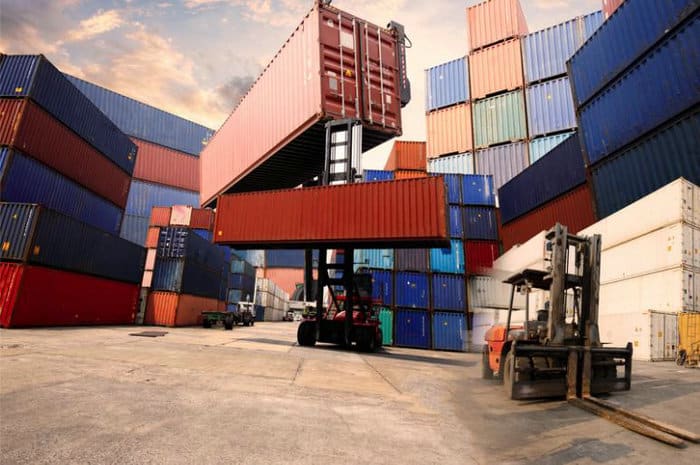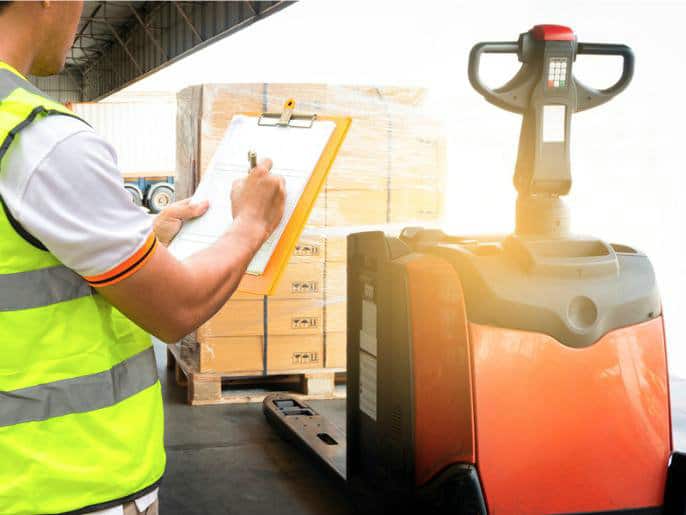
Freight from China to Laos involves various transportation methods, including air freight, ocean freight, road transportation, and rail shipping. Your choice of shipping method will depend on factors like cost, delivery time, and the nature of the goods you’re transporting. Your logistics plan will be influenced by the robust trade relations between China and Laos, which have led to established channels and infrastructure fostering efficient transit of goods.
Navigating customs regulations and understanding import taxes is critical to ensure a smooth shipping process from China to Laos. You must be aware of the necessary documentation and comply with both countries’ regulatory requirements to avoid delays and fines. Working with experienced freight forwarders and customs brokers can be invaluable in managing the intricate aspects of cross-border shipping.
Strategic considerations regarding your supply chain efficiency and cost-effectiveness are also crucial. China’s expansion of the Belt and Road Initiative has improved connectivity, presenting new opportunities to optimize your shipping routes. Balancing time, cost, and reliability will ultimately determine the effectiveness of your shipping strategy from China to Laos.
Overview of Shipping Routes
When you consider shipping from China to Laos, your primary avenues are via sea or overland through various border crossings.
Maritime Shipping Lanes
You have access to several ports in China that offer routes to Laos, albeit indirectly due to Laos being landlocked. The Port of Beihai, the Port of Zhanjiang, and the larger Port of Guangzhou are viable options. Your cargo typically transits through these ports and is then transferred to trucks or rail for onward shipment into Laos.
Key Maritime Routes:
- Beihai to Vietnam, then overland to Laos
- Zhanjiang to Vietnam, connecting to Laos by land
- Guangzhou to Thailand, followed by truck to Laos
Land Freight Options
Land freight for shipping products from China to Laos involves either trucking or rail transport. Your main routes include the Kunming–Bangkok Expressway and the China–Laos railway linking Kunming to Vientiane.
| Mode of Transport | Route Description | Connectivity |
|---|---|---|
| Road Freight | Via Kunming–Bangkok Expressway directly into Laos | Extensive regional connections |
| Rail Freight | Kunming to Vientiane, via the newly built rail network | Fast and increasingly preferred |
Air Shipping Options
Major cargo airlines offer freight services connecting multiple cities across China to Vientiane and other airports in Laos.
- China Southern Airlines: Offers freight services from major Chinese cities like Guangzhou, Shenzhen, Shanghai, and Beijing to Vientiane International Airport in Laos
- Air China Cargo: Provides freight flights from Beijing, Shanghai, Chengdu, Chongqing, and other cities in China to Vientiane and other airports in Laos
- SF Airlines: A cargo airline based in Shenzhen that flies from Shenzhen, Shanghai, Hangzhou, Guangzhou, and other Chinese cities to Vientiane and other destinations in Laos.
- YTO Cargo Airlines: Flies cargo from Shanghai, Hangzhou, Ningbo, Shenzhen, Guangzhou, and other cities in China to Vientiane and other airports in Laos
Shipping Methodsbulk
In evaluating your shipping options from China to Laos, you’ll primarily choose between container shipping for various goods and bulk cargo for large, unpackaged materials.
Container Shipping
Container shipping is your go-to for a structured and secure means of transport. Your goods are packed into containers that come in different sizes, most notably:
- 20-foot containers: Ideal for smaller shipments.
- 40-foot containers: Suitable for larger or multiple-item shipments.
These containers can be shipped by different methods, notably:
- Standard Shipping: Regular services with predefined schedules.
- Express Shipping: Faster services for urgent deliveries.
Bulk Cargo
For transporting large quantities of loose materials such as coal, grain, or minerals, bulk cargo is your efficient choice. It allows the transportation of goods unsuitable for containerization because they are either too heavy or too big. Key considerations include:
- Capacity: Bulk carriers vary in size, accommodating different cargo volumes.
- Special Handling: Some bulk materials require special handling equipment or ships designed for specific types of cargo.
Cost Considerations

When importing goods from China to Laos, you must be aware of the various costs involved. These costs significantly influence the final landed price of your goods.
Shipping Rates
Shipping costs are influenced by the mode of transport you choose: air freight is the fastest but most expensive way to ship goods, while sea freight usually costs less but takes longer.
| Mode of Transport | Freight Rates |
| Sea Freight | $1,200 – $2,500 for 20′ container |
| Air Freight | $3-4/kg |
Taxes and Duties
You are responsible for understanding and paying the appropriate taxes and duties. Taxes depend on the valuation of the goods, whereas duties are determined by the commodity type. Laos has its own taxation system, which typically includes value-added tax (VAT) and specific import duties.
| VAT in Laos | Usually 10% |
| Import Duties | Variable based on commodity type |
Please note that these figures are estimates and can change due to various factors such as commodity classification, quantity, and changes in taxation laws. For accurate and up-to-date information, consult with a customs broker or a logistics provider.
Transit Times
When shipping from China to Laos, the transit times can vary based on the shipping method chosen. Below are the specifics for standard transit periods and expedited shipping options.
Standard Transit Periods
Typically, the standard transit time for shipping goods from China to Laos ranges from 10 to 25 days. This period can be affected by factors such as customs clearance, transportation mode, and the specific origin and destination within both countries.
| Mode of Transport | Transit Time |
| Road Transport | Approximately 10-15 days, depending on border crossing times |
| Rail Transport | Roughly 15-20 days, as it can be quicker than road but relies on train schedules. |
| Sea Freight (via Vietnam) | Usually takes about 20-25 days, considering the sea voyage to Vietnam followed by land transport to Laos. |
Expedited Shipping Options
For quicker delivery, expedited shipping options are available, reducing the transit time significantly, often to a range of 3 to 7 days. This service typically incurs higher costs and depends on the courier services’ efficiency.
| Mode of Transport | Transit Time |
| Air Freight | The quickest method, generally taking about 3-5 days |
| Express Road Transport | A dedicated vehicle for your goods can reduce the time to roughly 5-7 days, bypassing the usual consolidation delays |
Customs Regulations
When shipping to Laos, you must adhere to regulations set by both countries’ customs authorities to ensure a smooth process.
China’s Export Procedures
To export goods from China, you need to submit a declaration with the required documents to Chinese customs. The key documents include:
- Commercial Invoice: Reflects the value and description of the goods.
- Packing List: Details the packaging and contents.
- Export License: Required for certain controlled items.
- Customs Declaration Form: Mandatory for all exports.
You should also check if your goods require a special export permit. Compliance with China’s regulations is critical to prevent delays or penalties.
Laos Import Requirements
Upon arrival in Laos, your shipment must conform to local import regulations:
- Import Declaration: Register your goods with Laotian customs.
- Certificate of Origin: Verifies the goods’ manufacturing location.
- Import License: Necessary for restricted items.
- Duty Payment Receipt: Proof of paid import duties and taxes.
You are responsible for ensuring the accurate classification of goods and correct duty payments. Non-compliance can result in fines or confiscation of the shipment.
Logistical Challenges

When shipping cargo from China to Laos, you’ll encounter specific challenges due to limitations in infrastructure and the complexities of cross-border coordination. Understanding these hurdles is crucial for navigating the logistics landscape effectively.
Infrastructure Limitations
Laos is a landlocked country, which inherently limits your shipping options. The national road and rail networks are not as developed as those in neighboring China, which may slow down transport times. Key points to note include:
- Road Quality: Many roads are unpaved or in disrepair, particularly in rural areas, leading to potential delays.
- Rail Connectivity: The Laos-China Railway provides a direct connection, but rail infrastructure within Laos beyond this line remains underdeveloped.
Cross-Border Coordination
Shipping between China and Laos requires careful coordination due to differences in customs regulations and documentation requirements. Essential aspects to consider:
- Customs Clearance: Delays can occur during customs clearance due to discrepancies in paperwork or regulatory changes.
- Language Barriers: Mandarin and Lao are the primary languages, which might necessitate translators to ensure accurate communication between shipping agents.
Documentation Required
When importing from China to Laos, there are certain documents you must prepare to ensure a smooth customs clearance process. These documents are vital for verifying the legitimacy of the goods being shipped and for compliance with international trade regulations.
Bill of Lading
The Bill of Lading (B/L) acts as the official contract between you, the shipper, and the carrier. It serves multiple purposes:
- Proof of Contract: Confirms that the carrier has received the goods and has agreed to transport them to a specified destination.
- Receipt of Goods: Acts as evidence that the goods have been loaded on board the vessel.
For your shipment, the Bill of Lading must include:
- Shipper and consignee’s full names and addresses
- The full vessel name and voyage number
- Port of loading and port of discharge
- Description of goods, including quantity, weight, and volume
- Terms of carriage and freight details
Certificates of Origin
Certificates of Origin (CO) authenticate that your products were manufactured in China. They are required by the Laos customs authority to determine the eligibility of your goods for import and to apply the correct tariffs and taxes.
To complete a CO, you’ll need to provide:
- Full details of the producer or manufacturer
- Description of goods, including HS codes
- Details of the route from China to Laos, including transit countries if applicable
Make sure the Certificate of Origin is stamped by the relevant chamber of commerce.
Insurance for Shipments
Securing comprehensive insurance is essential to safeguard your cargo during transit from China to Laos. Adequate coverage mitigates financial risk in the event of unforeseen incidents.
Cargo Insurance Types
Various types of insurance can protect your shipments between China and Laos, each catering to specific risks:
- All-Risk Insurance: This type offers the most comprehensive coverage, protecting against all possible risks, except those explicitly excluded in the policy.
- Named Perils Insurance: This type covers only the risks that are specifically named in the policy, such as theft, fire, or weather damage.
- Total Loss Insurance: As the name suggests, this insurance covers you only if the entire shipment is lost or damaged beyond repair.
- With Average (WA) / With Particular Average (WPA): It covers partial losses to the shipment that are directly caused by a peril detailed in the policy.
Claim Procedures
If your shipment encounters an issue, follow these steps promptly to file a claim:
- Notification: Notify your insurer as soon as possible about the mishap.
- Documentation: Gather all necessary documents, including a copy of the insurance policy, the shipping invoice, and any evidence of damage (e.g., photos).
- Submit Claim: Complete the claim form provided by your insurance company and submit it alongside the supporting documents.
- Assessment: An adjuster will review the claim and may inspect the cargo damage to determine compensation.
- Resolution: The insurer will settle the claim based on the policy terms, and you’ll receive compensation accordingly.
Tracking and Visibility
Effective tracking and visibility are crucial for successfully managing shipments from China to Laos. These systems provide peace of mind and allow you to monitor your cargo’s journey every step of the way.
Real-Time Tracking Technologies
With real-time tracking technologies, you can pinpoint the exact location of your shipment. GPS and IoT-based sensors offer up-to-the-minute data, which is accessible through specialized logistics platforms.
- GPS Tracking: Satellite-guided technology that gives you global location information.
- RFID Tags: Short-range radio frequency identification providing location status within warehouses or checkpoints.
- IoT Sensors: Devices that report your shipment’s condition, including temperature, humidity, and container security, in real-time.
Reporting and Alerts
Reporting and alerts keep you informed about your shipment’s progress and any potential issues.
- Automated Reports: Regularly scheduled updates delivered via email or SMS.
- Custom Alerts: Instant notifications about important events like customs clearance, delivery status, or unforeseen delays.
- Dashboard Updates: A centralized digital interface where you can view detailed reports and the current status of your cargo.
Why Choose Us? Luckystar Logistic
Luckystar, founded in 2022, is a distinguished member of the Federal Maritime Commission (FMC) and operates as a Non-Vessel Operating Common Carrier (NVOCC). The freight forwarding company primarily serves China, the USA, Canada, and Europe, striving to offer top-notch shipping service quality at lower costs. Since its establishment, the shipping company has remained steadfast in its commitment to providing global door to door delivery, focusing on reliability, flexibility, and promptness.
We help you calculate the shipping cost and leverage our route knowledge and relationships to optimize logistics, balancing cost, speed, and reliability. We offer the best shipping solution and freight service from China to Laos.
Please contact us for further assistance if you have any other questions or need more details on the delivery service. We strive to help businesses make informed freight mode selections and fulfill all your shipping requirements from China to Laos.
